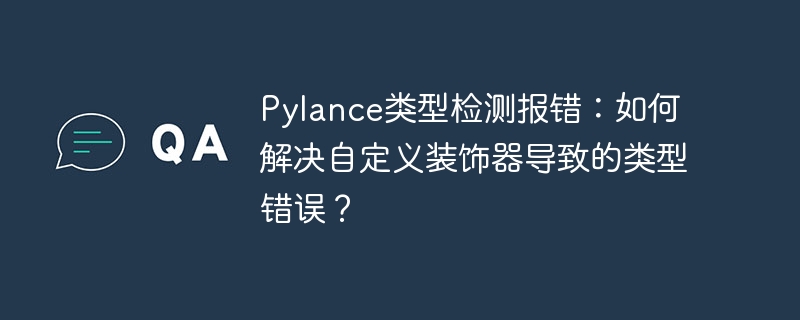Pylance类型检测报错:如何解决自定义装饰器导致的类型错误?

解决使用自定义装饰器时的 pylance 类型检测错误
使用自定义装饰器时,pylance 可能会报告类型检测错误,即使实际代码运行正常。这通常是由于 pylance 无法正确识别自定义装饰器的返回类型。
考虑以下示例代码:
from typing import callable
def execute(func) -> callable[..., result]:
def inner_wrapper(*args, **kwargs):
with session.begin() as session:
result = session.execute(func(*args, **kwargs))
return result
return inner_wrapper
@execute
def query_data_source(
start_id: int = 1, max_results_amount: int = 10
) -> select: # 忽略
stmt = (
select(
datasource.id,
datasource.name,
datasource.source_url,
datasource.author,
datasource.description,
datasource.cover_image_url,
datasource.start_date,
datasource.end_date,
)
.where(datasource.id >= start_id)
.limit(max_results_amount)
.order_by(datasource.id)
)
return stmt此代码的一个问题是 pylance 假设 query_data_source 函数返回 select 对象,而不是 result 对象。为了解决此错误,修改 execute 装饰器以明确声明其返回类型的返回类型:
def execute(func) -> Callable[..., Result]:
此修改通知 pylance execute 装饰的函数返回 result 对象,从而消除类型检测错误。
以上就是Pylance类型检测报错:如何解决自定义装饰器导致的类型错误?的详细内容,更多请关注硕下网其它相关文章!
